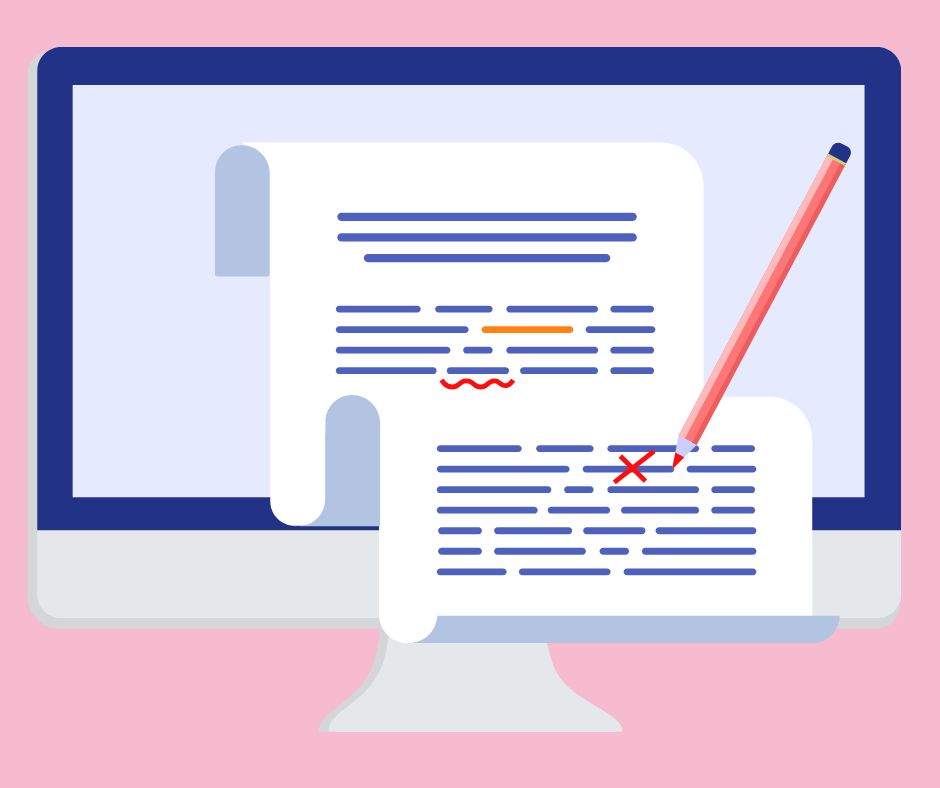37 Ideas to Bust Writer’s Block During NaNoWriMo or Anytime

Success at National Novel Writing Month starts with a good plan and an environment conducing to writing. But it finishes with the ability to keep writing when the muse leaves, you’re overwhelmed and frustrated, or you’re just don’t want to write.
To help you get through these moments, here are 37 ideas, in no particular order, of things to do when you get stuck or want to quit NaNoWriMo.
Text version is below video.
37 Ideas to Bust Writer’s Block During NaNoWriMo
1. Take a Break
Taking a break may seem counterintuitive during a writing challenge, but it’s often exactly what’s needed. Step away from your novel to clear your head. Take a walk, have a cup of tea, or just breathe. Sometimes, your story will come as you do another activity, so have a notebook or recorder on hand.
2. Change Your Environment
Having a writing space is important, but if you find yourself uninspired, writing somewhere else can help. Move to a different spot in your home or go to the library or a local coffee café.
3. Write Out of Order
There is no rule that says you have to write from the beginning to the end. If you’re stuck on a particular part of your novel, jump ahead to a scene that you know or are excited about. I can’t tell you how many times I’ve gone from writing the inciting event to the black moment during NaNoWriMo. Skipping to scenes you know the content of helps you keep up on word count, and can spark ideas for the scenes you’re struggling with.
4. Flesh Out Writing
Sometimes what you need is already on the page. Go back and add layers of description and senses to your scenes. Enhance the emotional stakes and the atmosphere. As a romance writer, these details can deepen the intimacy between your characters.
5. Recap with Story Summaries
Take a moment to recap what’s happened in your story so far. Yes, this might be redundant and possibly will be cut in revision, but summarizing what’s already happened can help you conceptualize and organize your story ideas and remind you of forgotten plot points and character arcs that need resolving, providing a springboard for new material.
6. “What If” Questions
When in doubt, ask “What if?” Pose scenarios to your characters that challenge them, alter their paths, or deepen their relationships. Romance thrives on tension and the unexpected, which makes it fertile ground for “what if” questions.
7. Use Writing Prompts
Writing prompts can awaken your muse by giving you ideas you might have considered. Squibler has 130 romance writing prompts. Reedsy has 80. Screencraft has 101 romance prompts. If your romance includes another genre like suspense or fantasy, do a search on the genre and story prompts (e.g. fantasy story prompts).
8. Brainstorm with AI
AI has become a dirty word in writing, but AI is a tool like anything else. Beyond doing the writing, AI can research, edit, and even brainstorm ideas. Simply give the AI a basic summary of what’s going on and ask it for ideas on what can happen next.
9. Read What You’ve Already Written
This is not to revise or edit, although you could do that if it helps. Reading your story can help you re-immerse yourself into the plot and reconnect with your characters.
10. Join a Write-In
Write-ins are a staple of NaNoWriMo for a reason. They remind us that, even though writing is often a solitary activity, we’re all in this together. Plus, nothing beats the motivational power of writing alongside others. Check NaNoWriMo for write-ins in your area, or if there aren’t any, find online write-ins.
11. Talk About Your Story
Talking about your story can help you work through blocks by clarifying your thoughts. Sometimes this can happen simply by talking about it, but your partner might come up with ideas as well. I’ve used this a lot in my writing, and interestingly, the ideas my writing buddies come up with often don’t work, but they trigger ideas that do.
12. Free Write
If the pressure is mounting, let go of your novel for a bit and free write. Pen a poem, a diary entry, or a character’s secret thought. Freeform writing can loosen up mental blocks and open new pathways.
13. Letting Go of the Count
If write and check word count (359) over (578) and over (667)) again, it’s time to stop. Obsessing over word count can be counterproductive because it creates stress (ugh…still 1000 words to go!). Stop thinking about word count and simply write the story. If you fall short, so what? All words are good words. They all get you closer to getting your story written.
14. Create a Playlist
Music is a powerful mood setter. Create a playlist that reflects the mood of your novel, or a character’s personality. I love to write my romances to sensual old R&B music. Other times, I prefer instrumental music so the lyrics don’t distract me.
15. Move
Never underestimate the power of a walk or a workout to kickstart your creativity. Physical activity gets blood to your brain and clarity to your thoughts. I’ve done some of my best writing while exercising.
16. Delve into Characters
Do character development exercises. I’m not a huge fan of character sheets, but if you’re stuck, it could be that you don’t have a good sense of your characters yet, and these sheets or development exercises can help. While knowing their favorite food might help, look more into their past pains, current fears, and motivations.
17. Research
Similar to character development, research can provide more fuel to your story. Whether it’s historical details or understanding a profession, knowledge can breed inspiration.
18. Change Your Writing Mode
Switching from keyboard to pen can shift your mental gears. The difference of handwriting can tap into a different part of your brain, where the romantic and the dramatic live. Or dictate, which too requires a shift in writing. You can use AI tools to transcribe your handwriting. If you record your voice (as opposed to dictating into your documents) you can use AI to transcribe your words.
19. Keep Your Eye on the Prize
Okay, so there is no prize except bragging rights to complete NaNoWriMo, except that by the end of the month you have 50,000 words of a book. Visualizing your completed novel can be incredibly motivating. Picture the final scene, the last kiss, the words “The End” on the page. Or take it further and imagine your book in print!
20. Delve into Backstory
Like recapping, writing backstory can be something that ends up being cut from your final draft. However, writing backstory scenes can flesh out your characters and their motivations, which in turn can make writing the current story easier.
21. Focus on Subplots and Side Quests
Stuck with your main story? Dive into a subplot. Romance novels often have rich secondary plots that can be developed and woven into the main narrative.
22. Write from Another Character’s POV
There are several ways you can use this tip. First, rewrite a past scene from the other character’s POV. Yes, you’ll likely cut it, but you’re writing and learning more about your character. Another option is to write from a character’s POV that won’t be in the final draft. For example, maybe you want to write from the meddling mother’s POV or the sidekick’s. Doing this might give you insight into dynamics and tensions you hadn’t considered before.
23. Do a Sprint
Set yourself a timed writing challenge. It’s amazing what can come out when you’re writing against the clock and don’t have time to overthink. You can do this on your own or join a sprint online.
24. Add a Plot Twist
If you’re stuck, do something completely different. Go left instead of right. Make something go wrong or maybe go right. Introduce an unexpected element that will take your characters by surprise.
25. Give Yourself a Reward
Reward yourself for milestones. A little celebration can go a long way toward keeping you motivated. Do a happy dance. Allow yourself extra time on social media. Have a treat.
26. Do a Mind Map
Mind mapping can help you visualize where your story could go. There are several ways you can do this. One would be to put the issue you’re stuck on in the middle, and then use the spokes to come up with new ideas, letting those thoughts lead to new ones.
27. Ask for Feedback
Connect with another writer through Write with Harte or one of the Write with Harte groups or find a critique group in your area. Sometimes new eyes on your work can see things you’ve missed and provide the feedback or help you brainstorm ideas that will help you move forward.
28. Online Groups
Online forums provide a wealth of support and advice. They’re a place to share struggles and solutions and to remember that you’re not alone. We’ve got groups over at Write with Harte, or find writing groups on Facebook.
29. Read
Stephen King has said, “If you don’t have time to read, you don’t have the time (or the tools) to write. Simple as that.” Read a book from an author you admire. Your writing heroes can remind you of why you wanted to write in the first place, and their words can inspire you to keep writing.
30. Create a Vision Board for Your Book
Create a visual collage of your novel’s themes, settings, and characters, or you can go further and create a cover and a best seller sticker. This can serve as a tangible touchstone for your imagination. You can do this on Pinterest for a digital board. Or create one on Canva and print it out to hang where you can see it while you write.
31. Write Letters to Your Characters
Writing a letter to your characters is a unique way to delve into their psyches and can lead to revelations about their actions and desires. Better yet, write a letter to yourself from your characters.
32. Revisit the Core Conflict
In romance, conflict is what drives the story. If our characters met and fell in love, there wouldn’t be any interest. It’s their inner and outer conflicts that threaten the HEA that makes the story compelling. If you’re stuck, revisit the conflicts and ways you can use them to impede love.
33. Write the HEA
If you’re really stuck, write the end of the book, and then work backwards.
34. Refer to Your Outline
Sometimes a big picture overview can help you see the forest through the trees in writing. Other times, reviewing the outline can help you figure out what’s next or what’s not working. Have you veered off the outline, and if so, do you need to find your way back OR do you need to revamp the outline to fit the revised story?
35. Meditate or Daydream
Meditation can clear a cluttered mind, making space for new ideas to form. Or consider doing a mindless activity like walking or resting, and simply let your mind run free on your idea.
36. Draw Your Scene
Sketch out the scene or part of the story that is giving you trouble. You don’t have to be an artist to conceptualize your story. Drawing a scene can help you see it more clearly, adding layers of detail that you can then describe in your writing. Or like with vision boarding, search for images that fit elements of your book which can help you describe them.
37. Shut up the Critic and Write
Often what stops the writing process is worrying about the quality of the writing whether it’s the words themselves or the story. You have to stop that. Your inner critic will stifle your creativity. Worrying about writing things you’ll later cut (as some of the ideas above will result in) only adds to that. Your first draft is supposed to a free flow of ideas. It’s okay if it’s out of control, sometimes doesn’t make sense, or goes off the deep end. That’s what revision and editing are meant to clean up. So if you’re stuck. shut up the critic, woo the muse, and let your creativity flow.
Do you have other ideas to help work through writer’s block or other struggles in writing? Let me know in the comments!








Responses